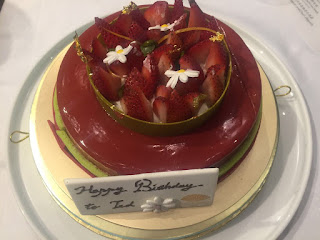Picasso's major stylistic phases as described by a variety of Picasso scholars, writers and critics.
The main phases of his Picasso's art were:
1. Blue Period (1903-5). Sad, gaunt people in gloomy settings, and then circus and harlequin subjects. The predominant colour is a melancholy blue.
Example: "Harleqins family" 1906.

2. Rose Period (1905-6). Romantic, delicately treated subjects in pale pink. Example: "The two brothers" 1906.
3. Cubism (1907-25, includes the Proto-Cubist, Analytical and Synthetic Periods). Natural forms were changed to geometric-like shapes. Distortion and multi-view figures in mainly dull colours.
Examples: "Guitar" 1913, "Three Musicians" 1921.
 Three Musicians is a perfect example of Picasso's Cubist style. In Cubism, the subject of the artwork is transformed into a sequence of planes, lines, and arcs. Cubism has been described as an intellectual style because the artists analyzed the shapes of their subjects and reinvented them on the canvas. The viewer must reconstruct the subject and space of the work by comparing the different shapes and forms to determine what each one represents. Through this process, the viewer participates with the artist in making the artwork make sense.
Three Musicians is a perfect example of Picasso's Cubist style. In Cubism, the subject of the artwork is transformed into a sequence of planes, lines, and arcs. Cubism has been described as an intellectual style because the artists analyzed the shapes of their subjects and reinvented them on the canvas. The viewer must reconstruct the subject and space of the work by comparing the different shapes and forms to determine what each one represents. Through this process, the viewer participates with the artist in making the artwork make sense.


4. Neo-Classicism (1920-30). Heavily-built
sculpturesque Grecian women. Example: "Three Woman at the spring" 1921.
6. A style reminiscent of stained glass (1932 onwards). Grotesque conventionalized and disjointed forms outlined with thick black lines. Examples: "Interior with girl drawing" 1935.
7. A style with strong expressionist elements (1938 onwards). Subjects that anticipate the terror of war and reveal the conflict in his mind. Double images and extreme distortion. Example: "Two women by the sea".
At one stage he appeared to be influenced by Negro sculpture His first consideration in artistic expression is form.
At one stage he appeared to be influenced by Negro sculpture His first consideration in artistic expression is form.
Even when his Cubist paintings bear a resemblance to objects, we must not look for realism in the usual way, but we should aim at deriving satisfaction from the patterned compositions of fragmentary and overlapping shapes. Sometimes we wonder what an object or a head looks like on the other side and we walk around to see. Similarily, certain paintings of Picasso's show both the front and the side of a person or object. The painting "Three Musicians'' is often referred to as the last great work of Cubism.


































